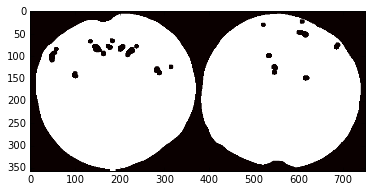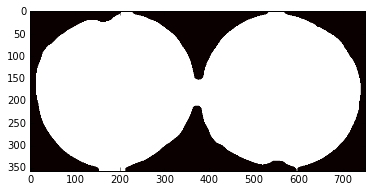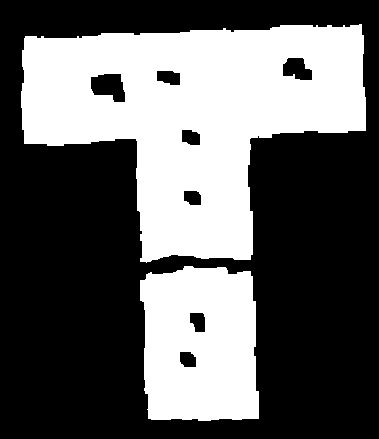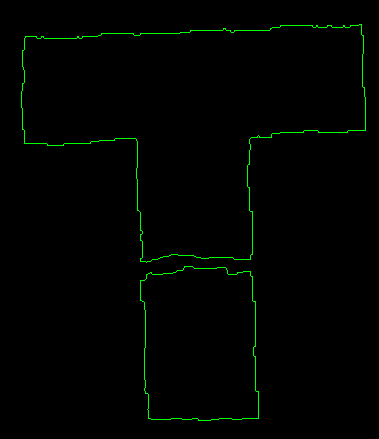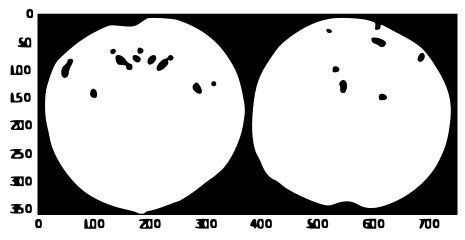Without applying a morphological filter first, you can try to detect the external contours of the image. Now you can draw these external contours as filled contours and then apply your morphological filter. This works because now you don't have any holes to fill. This is fairly simple.
Another approach:
- find external contours
- take the x, y of coordinates of the contour points. you can consider these as 1-D signals and apply a smoothing filter to these signals
In the code below, I've applied the second approach to a sample image.
Input image
![input]()
External contours without any smoothing
![no smoothing]()
After applying a Gaussian filter to x and y 1-D signals
![smooth]()
C++ code
Mat im = imread("4.png", 0);
Mat cont = im.clone();
Mat original = Mat::zeros(im.rows, im.cols, CV_8UC3);
Mat smoothed = Mat::zeros(im.rows, im.cols, CV_8UC3);
// contour smoothing parameters for gaussian filter
int filterRadius = 5;
int filterSize = 2 * filterRadius + 1;
double sigma = 10;
vector<vector<Point> > contours;
vector<Vec4i> hierarchy;
// find external contours and store all contour points
findContours(cont, contours, hierarchy, CV_RETR_EXTERNAL, CV_CHAIN_APPROX_NONE, Point(0, 0));
for(size_t j = 0; j < contours.size(); j++)
{
// draw the initial contour shape
drawContours(original, contours, j, Scalar(0, 255, 0), 1);
// extract x and y coordinates of points. we'll consider these as 1-D signals
// add circular padding to 1-D signals
size_t len = contours[j].size() + 2 * filterRadius;
size_t idx = (contours[j].size() - filterRadius);
vector<float> x, y;
for (size_t i = 0; i < len; i++)
{
x.push_back(contours[j][(idx + i) % contours[j].size()].x);
y.push_back(contours[j][(idx + i) % contours[j].size()].y);
}
// filter 1-D signals
vector<float> xFilt, yFilt;
GaussianBlur(x, xFilt, Size(filterSize, filterSize), sigma, sigma);
GaussianBlur(y, yFilt, Size(filterSize, filterSize), sigma, sigma);
// build smoothed contour
vector<vector<Point> > smoothContours;
vector<Point> smooth;
for (size_t i = filterRadius; i < contours[j].size() + filterRadius; i++)
{
smooth.push_back(Point(xFilt[i], yFilt[i]));
}
smoothContours.push_back(smooth);
drawContours(smoothed, smoothContours, 0, Scalar(255, 0, 0), 1);
cout << "debug contour " << j << " : " << contours[j].size() << ", " << smooth.size() << endl;
}

